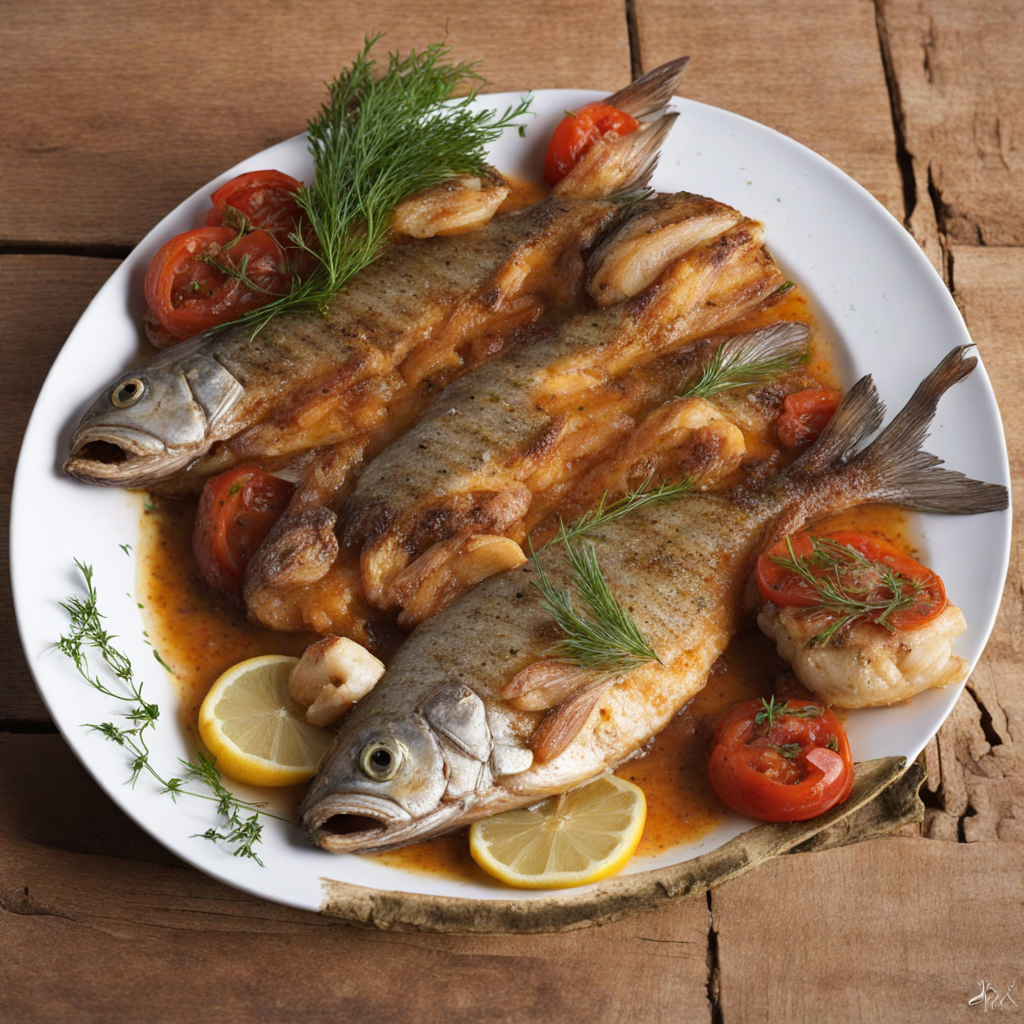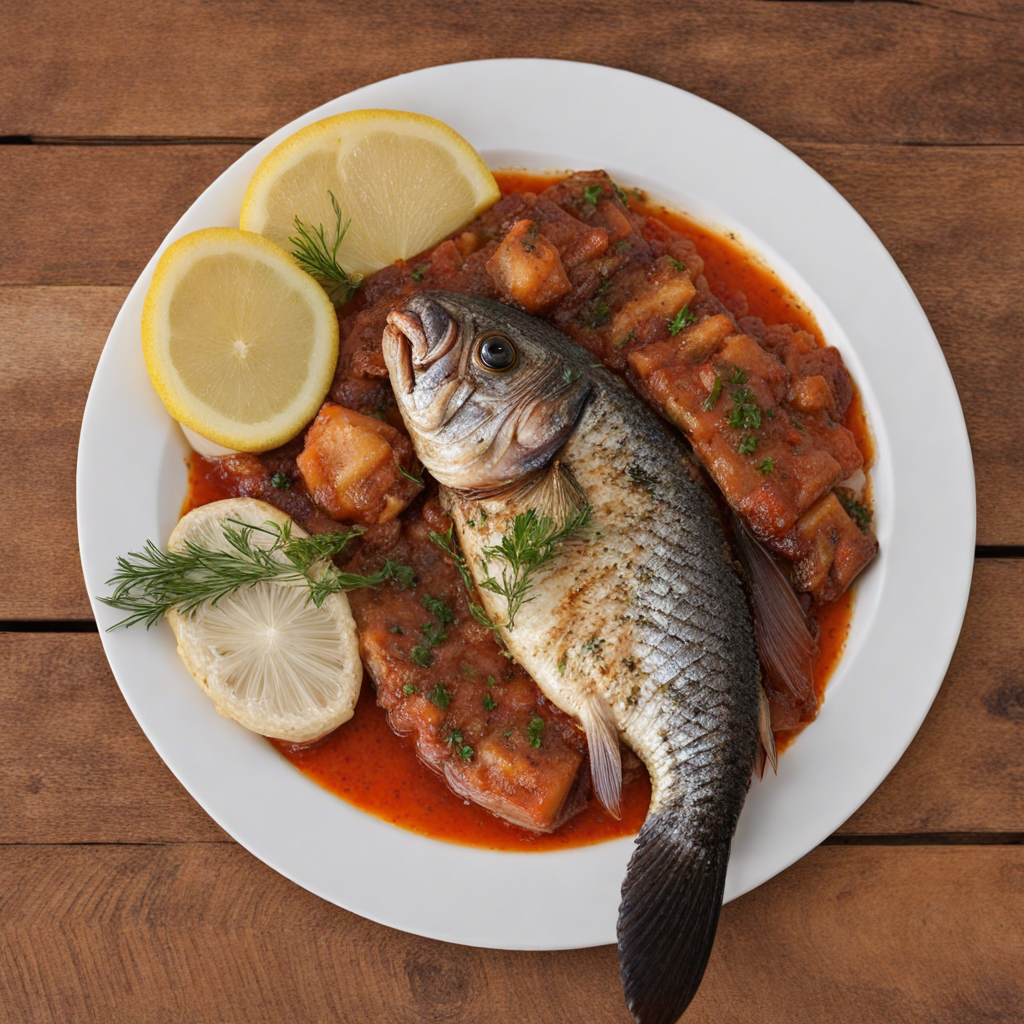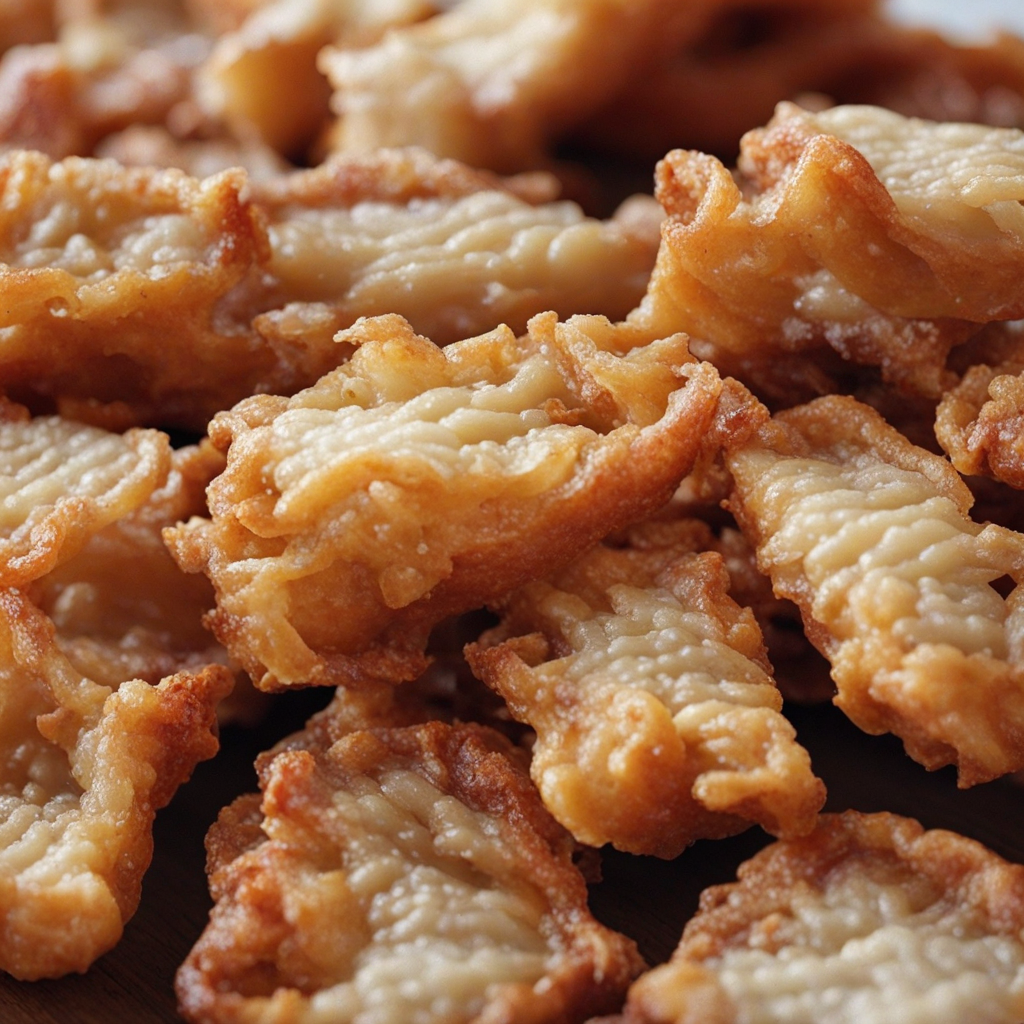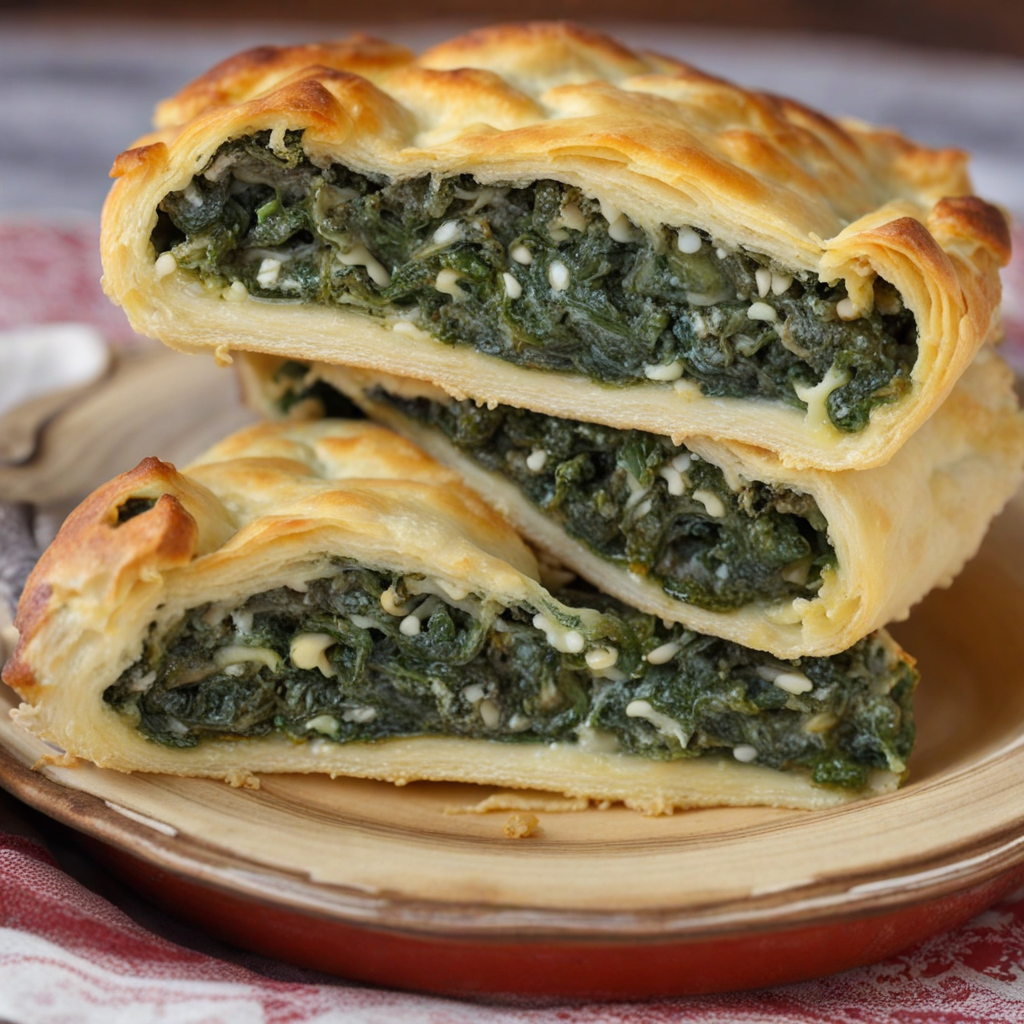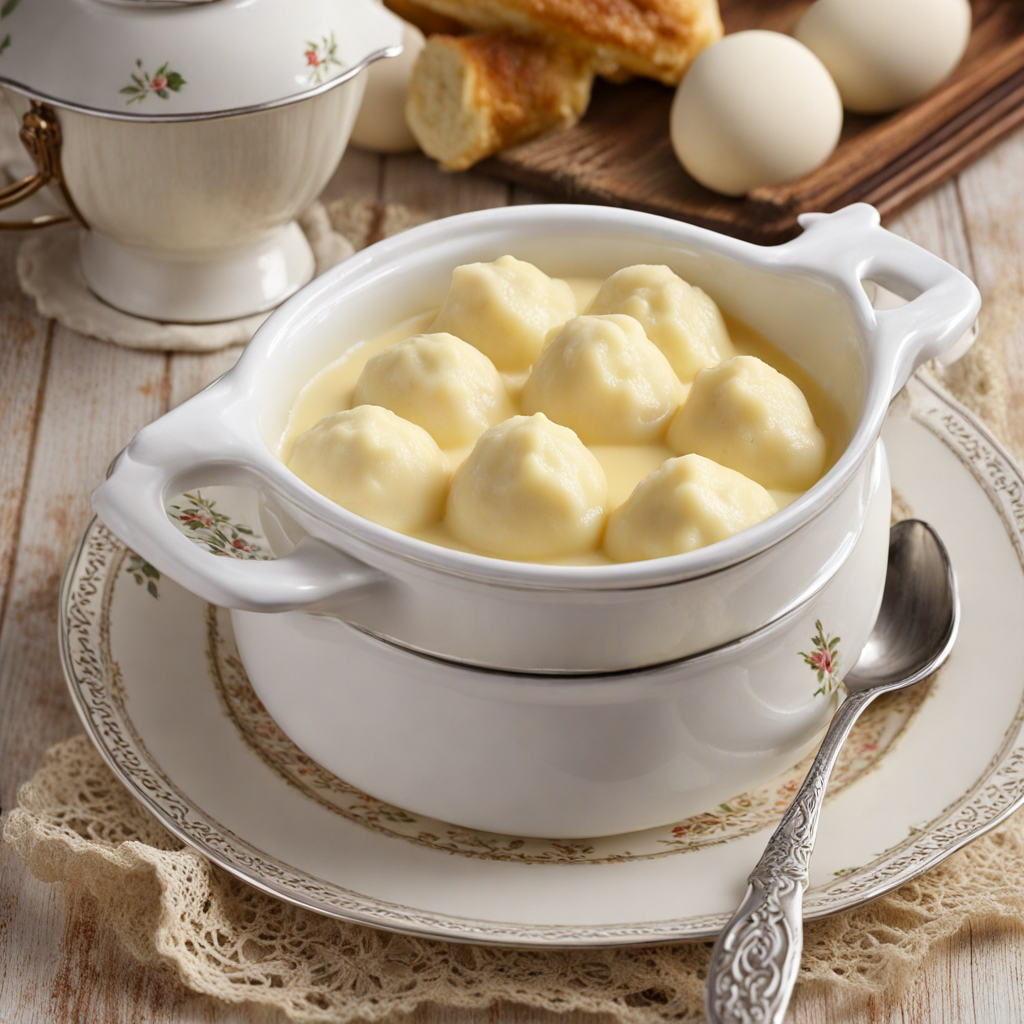Smudj
Smudj is a delightful Serbian dish that showcases the rich culinary traditions of the region, particularly celebrated for its unique blend of flavors and textures. At its core, Smudj typically features a delicate fish, often the catfish or pikeperch, which is seasoned to perfection with a medley of herbs and spices. What sets this dish apart is the way the fish is cooked; it is usually grilled or pan-fried, resulting in a crispy exterior while maintaining a tender, flaky interior. The dish is often accompanied by a vibrant sauce made from fresh tomatoes, peppers, and onions, which adds a layer of tanginess that complements the fish beautifully. In addition to the main protein, Smudj is often served with a variety of sides that enhance its overall appeal. Traditional accompaniments include a hearty serving of polenta or mashed potatoes, which provide a creamy contrast to the crispy fish. Seasonal vegetables, either grilled or sautéed, can also be found on the plate, adding freshness and color to the dish. The combination of these elements creates a harmonious balance, making each bite a delightful experience. One of the most captivating aspects of Smudj is its ability to embody the essence of Serbian cuisine, reflecting the country’s connection to its natural resources and agricultural heritage. The dish is often enjoyed in local taverns or family gatherings, where the communal aspect of dining enhances its flavors. As those who try Smudj will discover, every mouthful is not just about taste; it’s an invitation to explore the heart and soul of Serbia's culinary landscape.
How It Became This Dish
The History of Смуђ: A Culinary Gem of Serbia #### Origins and Nature The term "Смуђ" (pronounced "smuđ") refers to the European pikeperch (Sander lucioperca), a freshwater fish that inhabits rivers and lakes throughout Europe, including Serbia. This species is characterized by its elongated body, sharp teeth, and distinctive dark stripes that run along its sides. The pikeperch is particularly well-regarded for its firm, white flesh, mild flavor, and versatility in cooking, making it a prized catch among anglers and chefs alike. Historically, the pikeperch has been an important part of the aquatic ecosystem in the rivers and lakes of the Balkan region. Its presence in Serbia can be traced back to ancient times, and it has been a staple in the diet of local communities for centuries. The fish thrives in various habitats, including the Danube River, which has played a crucial role in the cultural and economic development of Serbia. #### Cultural Significance In Serbian culture, food is not merely sustenance; it is an integral aspect of social life, tradition, and identity. The consumption of fish, including smuđ, has deep-rooted connections to Serbian customs and rituals. Traditionally, fish is associated with various religious and cultural celebrations, particularly during the Orthodox Christian fasting periods. In these contexts, pikeperch is often prepared as a special dish, symbolizing not only nourishment but also a connection to heritage and spirituality. Smuđ has become a symbol of the rich culinary landscape of Serbia. It is often featured in traditional recipes passed down through generations, showcasing the importance of local ingredients and seasonal cooking. The fish is celebrated in regional festivals, where it is often the centerpiece of communal feasts, reflecting the importance of community and togetherness in Serbian culture. #### Culinary Development The culinary techniques associated with cooking smuđ have evolved over time, influenced by regional traditions, historical events, and the availability of ingredients. In the past, pikeperch was typically prepared using simple methods that highlighted its natural flavors. Grilling, frying, and baking were common, often accompanied by locally sourced vegetables and herbs. As Serbia underwent various cultural exchanges and influences, particularly during the Ottoman Empire and Austro-Hungarian rule, new cooking techniques and flavors began to emerge. This fusion of culinary practices led to more elaborate dishes featuring smuđ. For instance, the introduction of spices, marinades, and sauces from the East and West added complexity to pikeperch recipes, allowing chefs to experiment and innovate. One popular traditional dish is "Smuđ na roštilju," or grilled pikeperch, where the fish is marinated in a blend of olive oil, lemon juice, garlic, and herbs before being grilled to perfection. This preparation not only enhances the fish's natural flavors but also pays homage to the communal spirit of Serbian cooking, as it is often enjoyed during gatherings and celebrations. In addition to grilling, pikeperch is often prepared as a stew or soup, reflecting the hearty and rustic nature of Serbian cuisine. The dish "Riblji paprikaš," or fish stew, is a regional favorite, featuring pikeperch simmered with peppers, tomatoes, and traditional spices. This dish exemplifies the use of fresh, seasonal ingredients typical of Serbian cooking, while also showcasing the adaptability of smuđ in various culinary contexts. #### Modern Trends and Sustainability In recent years, the culinary landscape in Serbia has shifted towards a greater emphasis on sustainability and the use of local ingredients. As global awareness of environmental issues grows, many chefs are prioritizing the use of locally sourced fish, including smuđ, in their menus. This trend not only supports local fishermen and communities but also promotes the preservation of traditional fishing practices. Contemporary Serbian cuisine has also embraced innovation, with chefs experimenting with modern techniques and global flavors. This has led to the creation of dishes that blend traditional elements with contemporary culinary artistry. For example, pikeperch may be served with exotic garnishes or prepared using sous-vide methods, creating a fusion of old and new that delights the palate. Restaurants specializing in traditional Serbian cuisine have begun to highlight smuđ as a star ingredient, showcasing its versatility and adaptability. As local chefs gain recognition both nationally and internationally, the pikeperch has become emblematic of Serbia's rich culinary heritage. Food festivals celebrating local cuisine often feature smuđ as a highlight, drawing attention to its importance in Serbian gastronomy. #### Preservation of Tradition and Future Prospects Despite the evolution of culinary practices, the traditional methods of preparing smuđ are still cherished by many families in Serbia. Grandmothers often pass down recipes to their grandchildren, ensuring that the love for pikeperch and the skills to prepare it remain alive. This intergenerational transfer of knowledge is vital for preserving cultural identity and culinary heritage in an ever-changing world. As Serbia continues to develop its culinary scene, the future of smuđ looks promising. The increasing interest in regional cuisine, sustainable practices, and local sourcing is likely to ensure that this beloved fish remains a staple in Serbian households and restaurants alike. Furthermore, the global culinary community's growing appreciation for authentic, traditional dishes provides an opportunity for smuđ to gain international recognition. #### Conclusion The history of smuđ in Serbia is a testament to the enduring significance of food in shaping cultural identity, community connections, and culinary innovation. From its origins in the rivers and lakes of the region to its place on contemporary plates, pikeperch has woven itself into the fabric of Serbian life. As generations continue to embrace this culinary gem, the legacy of smuđ will undoubtedly thrive, celebrating the rich history and vibrant future of Serbian cuisine.
You may like
Discover local flavors from Serbia


